Here’s Why All Americans Need To Learn About Russian History
Many people find history boring, but I bet many of them would change their minds if they learned Russian history.
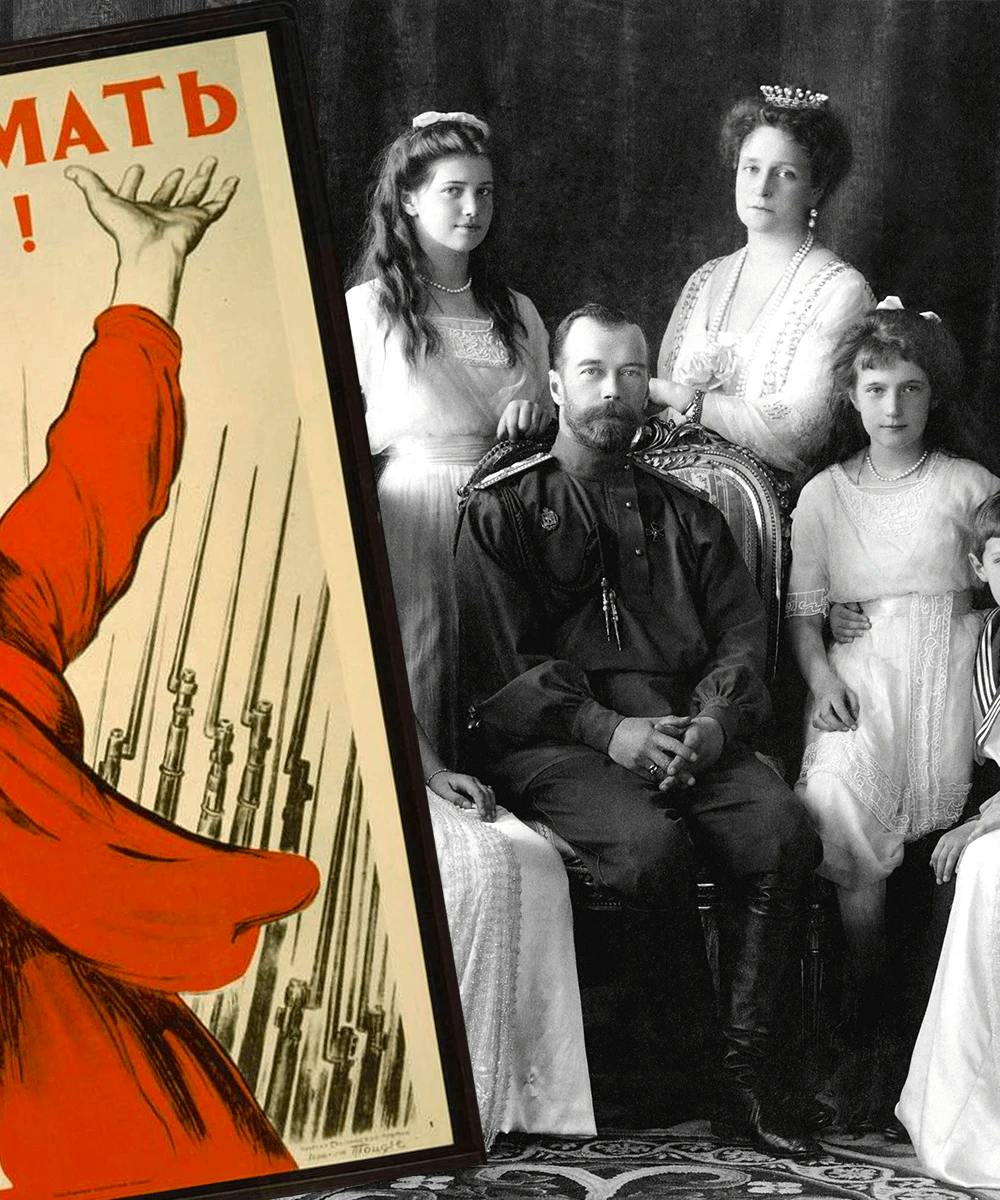
History education in the United States often focuses on American history and Western European history because they influence our culture the most. Russian history is often ignored. But it’s a shame that Russian history isn't taught as part of the canon because it has a unique and rich history of controversial figures, tragic figures, the best literature known to mankind, and tough lessons from history that we all need to learn.
Russia Is Home to Some of the Greatest Writers in History
Russians are known for their love of the arts. Though they’re famous for music and ballet, Russia is most famous for producing some of the greatest writers in history.
Leo Tolstoy
Born in 1828, Leo Tolstoy is the author of some of the greatest epic novels of all time, like War and Peace and Anna Karenina. Both novels were written in the latter half of Tolstoy’s life in the 1860s and 1870s. Both are just as relevant today as they were in the 19th century and are worth the read despite their hefty weight and complex themes. Tolstoy died in 1910 at 82 years old.
“All happy families are alike, but every unhappy family is unhappy in its own way.” — Tolstoy, Anna Karenina
Fyodor Dostoevsky
Born in 1821, Dostoevsky’s most famous novels include Crime and Punishment, The Idiot, The Brothers Karamazov, and Demons. Most of his work consists of themes related to psychology, philosophy, and morality. His novels aren’t as heavy as Tolstoy’s but still explore complex themes and are worth the read. Dostoevsky died in 1881 at 59 years old.
Aleksandr Pushkin
Known as the founder of modern Russian literature and also considered to be Russia’s greatest poet, Aleksandr Pushkin was born in 1799. His style of writing helped influence the modern Russian language, and his most famous works are Boris Godonov, Eugene Onegin, and The Bronze Horseman. Unlike Tolstoy and Dostoevsky, his work is easier to read, and he has written some of the most beautiful love poems in modern poetry. He died in 1837 at 37 years old.
“I loved you; even now I must confess, / Some embers of my love their fire retain; / But do not let it cause you more distress, / I do not want to sadden you again.”
Russia Is Home to Some of the Most Interesting Stories in History
History is full of colorful and complex characters who are often stranger than fiction. From the bizarre to the tragic, Russia is home to some of the most fascinating political figures in history.
Ivan the Terrible
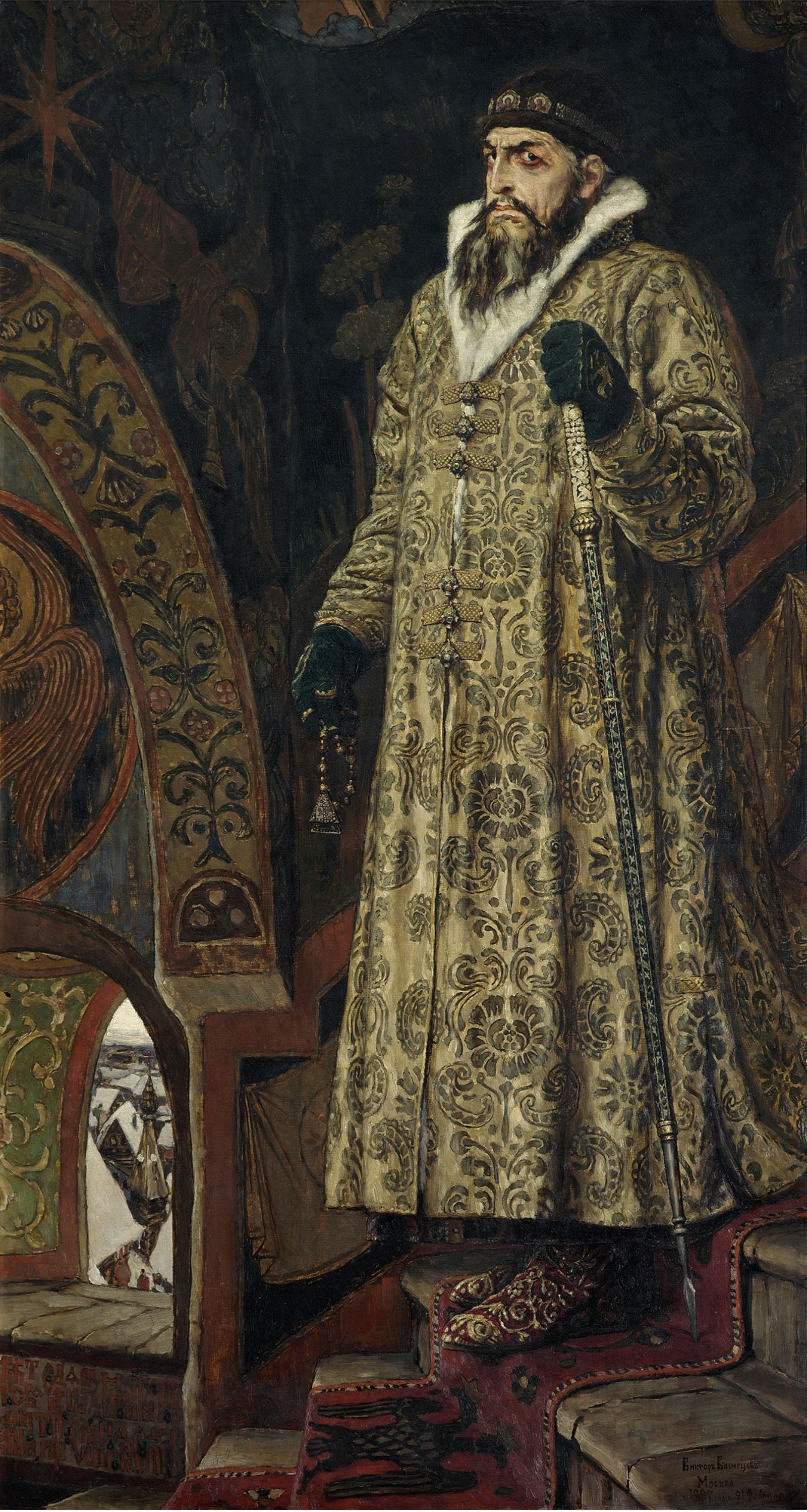
Before Stalin’s (more on him later) reign of terror in the mid-20th century, Ivan the Terrible terrorized Russia for nearly four decades in the 16th century. He was crowned tsar in 1547, and his paranoia and mental instability helped him live up to his nickname.
Though his ruthlessness helped Russia expand geographically and establish a stronger government, it also made being around him an absolute nightmare. His own family wasn’t safe from his violent outbursts, for he truly lived up to his nickname “the terrible” by killing his own son in 1581 during an argument over a dress his daughter-in-law was wearing.
Ivan died in 1584 at 53 years old, leaving behind a legacy of madness and terror.
Catherine the Great
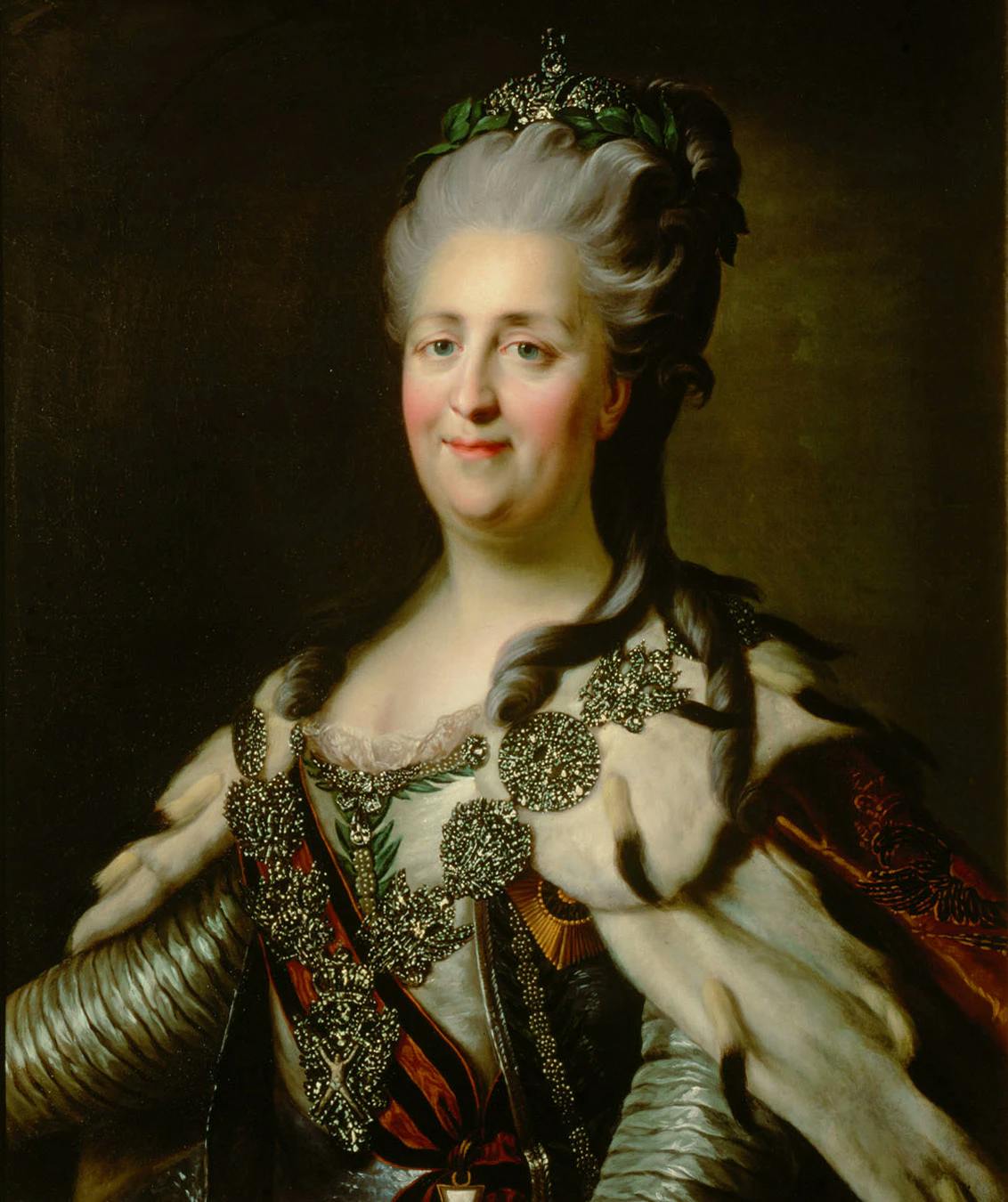
You may know Tsarina Catherine II, more famously known as Catherine the Great, from the Hulu original series, The Great, but the show only scratched the surface of the interesting things that happened in her life. The show is a fictional and comedic portrayal of her marriage to Tsar Peter III, who gives Henry VIII a run for his money for being the worst royal husband in history. He was nothing short of a bumbling idiot who made Catherine play with toy soldiers with him in bed and allegedly hung a rat by a noose for “committing treason.”
After 17 years of marriage, Peter was crowned Tsar Peter III and wanted to get rid of Catherine. Six months into his reign, Catherine led a coup to take the Russian crown from Peter, who was murdered by one of her lovers a week later.
Six months into his reign, Catherine led a coup to take the Russian crown from Peter.
Catherine had a vivacious sexual appetite (no, she didn’t have sex with a horse) and multiple lovers during her 34-year reign, one of the most famous being military leader Grigori Potemkin. It’s widely believed that Potemkin was her one true love as historian Sebag Montefiore writes, “Catherine and Potemkin were suddenly inseparable. When they were not together, even when they were just in their own apartments, a few yards apart, they wrote to each other manically.”
It’s nice to know that Catherine got to experience romantic love after her disastrous marriage to Peter. Although she and Potemkin eventually took in other lovers, they remained good friends until his death in 1791. Catherine died in 1796 at the age of 67.
The Last Romanovs
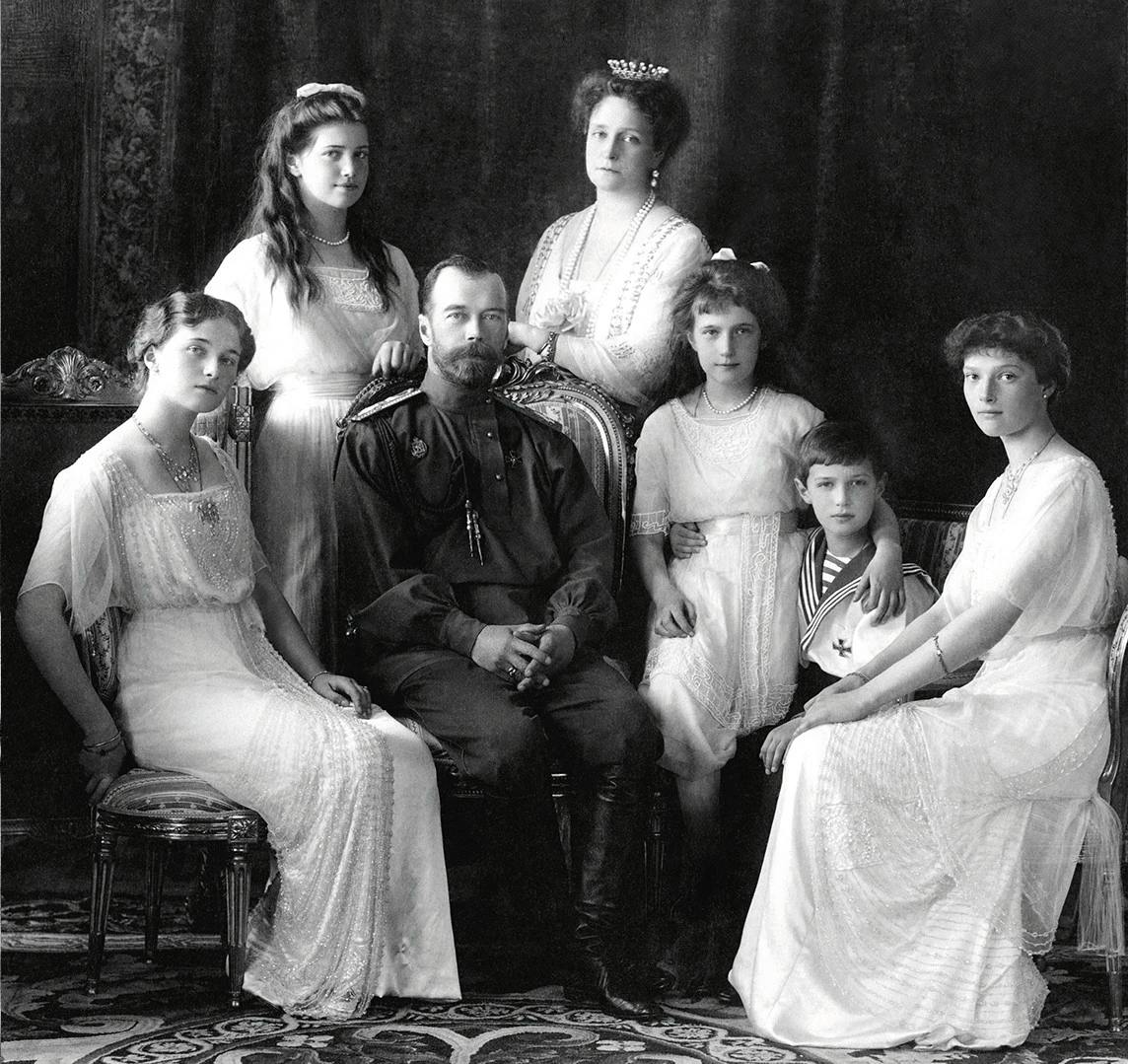
Though Imperial Russia had many tsars throughout the years, the last tsar of Russia, Nicholas II, gave us one of history’s most beautiful love stories. Nicholas and his wife Alexandra Feodorovna fell in love as teenagers, had a difficult road to marriage, and stuck with each other during the horrors of World War I and the Russian Revolution.
The last Romanovs were murdered by the Bolsheviks during the Russian Revolution on July 17, 1918, ending a three-centuries-old dynasty. Though the Bolsheviks wanted to rid the world of the Romanov legacy, the last Romanov family is remembered as a loving family who was in the wrong place at the wrong time.
Nicholas II became tsar in 1894 and married Queen Victoria’s favorite granddaughter, Alix of Hesse, in the same year. She was christened in the Russian Orthodox Church as Tsarina Alexandra Feodorovna of Russia.
Most royal marriages were out of political necessity, but Nicholas and Alexandra’s marriage was a true love match. In their lifetime, Nicholas had a reputation as an incompetent and indecisive ruler, and Alexandra was unpopular in court due to her German birth and awkward demeanor. Though their legacy includes their flaws, they’re also remembered for being devoted to each other and to their five children: Olga, Tatiana, Maria, Anastasia, and Alexei.
Recent DNA evidence shows Anastasia did die with her family in 1918.
You’re probably familiar with the story of Grand Duchess Anastasia, the youngest Romanov daughter who was rumored to have escaped death, though recent DNA evidence shows she did die with her family in 1918. The story of her rumored escape is told in the 1956 film starring Ingrid Bergman, and it was the inspiration behind the 1997 animated film and 2017 Broadway musical, Anastasia.
Other than Anastasia, you’re probably also familiar with Grigori Rasputin, the controversial monk who helped “heal” Nicholas and Alexandra’s youngest and only son, Alexei, from his health struggles with hemophilia.
Nicholas and Alexandra also had three other daughters: Olga, Tatiana, and Maria. Olga and Tatiana were well-known for their work as Red Cross nurses during World War I (side note, how badass is it that two of the tsar’s teenaged daughters were wartime nurses?), and Maria is often remembered for capturing the heart of Lord Louis Mountbatten, uncle to Prince Philip.
Those Who Don’t Know History Are Doomed To Repeat It
You’ve heard this phrase before and probably rolled your eyes at it, but it’s true. Most of us don’t learn about Russian history outside of the American perspective of the Cold War (which is very important), so we don’t know that some of the most horrific events of the 20th century (minus the Holocaust in Nazi Germany) happened in Russia and the Soviet Union. It’s important to learn about these atrocities so future societies don’t repeat these mistakes and pay for them with millions (yes, millions) of innocent lives.
The Bolshevik Revolution
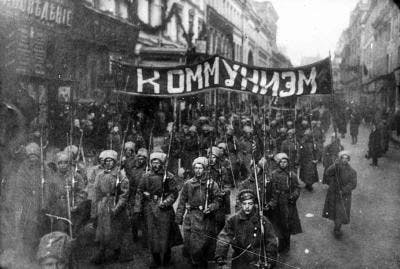
The history of the Russian Revolution is complicated, but one of the most important things to remember is the role the Bolshevik party played in the Russian Revolution, the Russian Civil War, and the atrocities they committed before and after.
When the Russian Revolution began in February/March 1917, the power was transferred from the Tsar to the Provisional Government. There were arguments within the Provisional Government on how to move forward, and the Bolsheviks took advantage of the divisions within the government and Russian people. In October/November 1917, the Bolsheviks took over the government in a bloodless coup, but more violence and terror would come in the coming months.
The Soviet Union was one of the bloodiest political regimes in modern history.
Led by Vladimir Lenin, the Bolsheviks were Marxists and believed the "soldiers, peasants, and workers" should rule the government instead of the bourgeois class. The fight for control of the Russian government led to the Russian Civil War, which was won by the Bolsheviks. They established the Soviet Union after the war, starting one of the bloodiest political regimes in modern history.
The Ukrainian Genocide
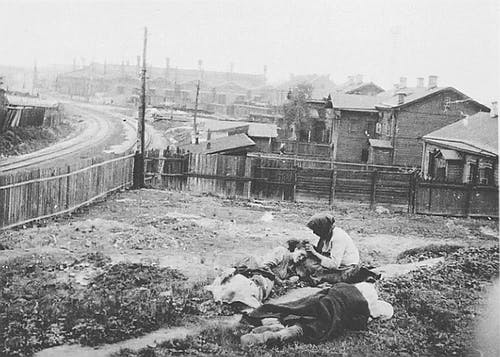
The brutality of Soviet leader Joseph Stalin is often overshadowed by Adolf Hitler’s Nazi regime, but that doesn’t make Stalin a better leader than Hitler, for both men were the epitome of evil and the worst humanity has to offer.
One of Stalin’s most brutal acts as the leader of the Soviet Union was the Holodomor, more famously known as the Ukrainian Famine or Ukrainian Genocide. Between 1932 and 1933, it’s estimated that 3.5 to 7 million Ukrainians died of starvation and disease due to the manmade famine.
Trevor Erlacher, a historian and author who specializes in modern Ukrainian history, writes, “Stalin appears to have been motivated by the goal of transforming the Ukrainian nation into his idea of a modern, proletarian, socialist nation, even if this entailed the physical destruction of broad sections of its population.”
3.5 to 7 million Ukrainians died of starvation and disease due to the manmade famine.
Stalin achieved his goal by setting impossibly high grain quotas for Ukrainian farms to meet. Most farms were forced to close, which deprived the Ukrainian people of food. The 1932 decree of “Five Stalks of Grain” made it worse, for thousands of Ukrainians were executed if they took more than five stalks. This led to millions of Ukrainian peasants starving to death and leaving survivors to resort to eating their pets and to cannibalism.
This horrific famine is considered genocide by historians because it was a manmade famine with the clear goal of wiping out the Ukrainian population. Many historians believe that Stalin targeted the Ukrainian people because many of them were openly skeptical of him, which was essentially a death sentence under the Stalinist regime.
The Gulag Archipelago
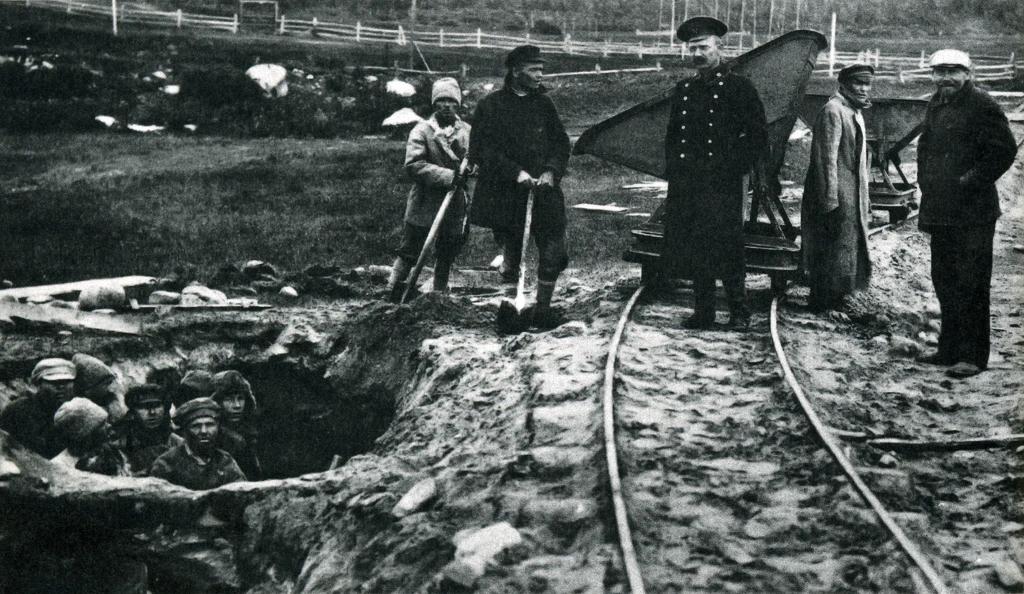
Photo Credit: Wikipedia Commons
Though some of Russia’s most famous works of literature come from the 19th century, The Gulag Archipelago is one of the most famous books of the Soviet era. Published in three volumes between 1958 and 1968, author Aleksandr Solzhenitsyn wrote about the Soviet Union’s oppressive system of government and his experience as a prisoner in a gulag. He spent eight years at a gulag for "counterrevolutionary activity” (he insulted Stalin in a letter to a friend) when he was serving in World War II in 1945. His writings in The Gulag Archipelago described the horrific nature of the gulags, making it one of the most controversial books in the Soviet Union.
Though many were sent to gulags for political dissidence during Stalin's Great Purge and beyond, some were sent for no reason at all or because they were in the wrong place at the wrong time. Vera Golobeva spent six years in a gulag for no reason, and she tells her story in the video below.
Closing Thoughts
Nothing helps us understand the present like history, and Russian history (especially in the 20th century) has a stronger presence in our culture than most Americans know. We must study Russian history to avoid repeating it.
Without you, there would be no Evie. Tell us what you love about Evie and what else you want to see from us in the official Evie reader survey.